National Memorial to the Heavenly Hundred Heroes, L'viv, UA
Memorial to the Heavenly Hundred Heroes. This minimalist space conveys the spirit of modernity and perpetuates the memory of the Heavenly Hundred Heroes who sacrificed their lives during the Revolution of Dignity. In the competition, the task was assigned to a neglected site in the center – the historical part of Lviv, which is part of the UNESCO zone. This is a complex terrain with large level differences (more than 10 meters). After analyzing the relief, we tried to integrate the space in the historically formed environment, thus dividing it into different level zones. The memorial space consists of the main square with a memorial stele and walking terrace paths with access to the observation decks. On the stele, there are portraits of the Heroes, and the form itself resembles a barricade, a shield, a kind of "breaking point in the country's history" and the indomitable spirit of the people. The observation decks offer panoramic views of the city, and these areas, together with the main square, create a public place of remembrance with the possibility of holding open exhibitions. The memorial complex has become a meeting place for hundreds of visitors. It is a place of reincarnation of an abandoned space into an open one, which conveys a feeling of peace, inviolability, and freedom. The following tasks were solved in the project: memorialization of the fallen Heroes, preserving the memory of historical events, creation of a modern public space with the possibility of holding exhibitions on terraces and squares, partial reconstruction of the historical terraced site, creation of new viewpoints to the city panorama (about 13 church ensembles can be viewed). The architects’ main task and idea were to rethink the vision of memory in the form of a monument - to transform it into a public space, to move away from stereotypes, to create a memory space that unobtrusively carries history. The main criterion from the families of the fallen Heroes was to replace the names of the Heroes engraved in the stele with their portraits; this problem was solved by visualizing portraits in one graphic style with the names and life credo below. Locals were most concerned about the preservation of the historically formed environment of the place, its existing perennials, and viewpoints. In the project, the architects tried to form the space by preserving the maximum number of trees, only the sick and self-seeded plants were cut down. Cantilevers are protruding over the hill, where you can feel the peace over the noisy city, supplement panoramic points. The total area of the plot is 0.9140 ha. The memorial stele is placed on a concrete wall; its metal frame is made of 210 different size parts and lined with sheets of Corten-steel. The visual appearance of the stele resembles flame, shooting, burning barricades, which became symbols of the Revolution of Dignity. On the stele, there are portraits made of stainless steel by laser engraving. In front of the stele the square occupies 550 sq m, it is made of concrete and inserts of chipped granite and supplemented with greenery. Walkways and cantilevers are made of high-strength concrete. Decorative cereals are planted all over the complex, resembling an ear of wheat, which is a symbol of the Ukrainian people. The lighting of the memorial is also an important element. The main light line runs under the stele. Together with the Corten-steel, the light creates a feeling of burning fire. It is noticeable from a distance that this line seems to cut through the hill, creating a burning scar that has remained in our history. The construction project cost is about 587 thousand EUR (equivalent to 20 million UAH).
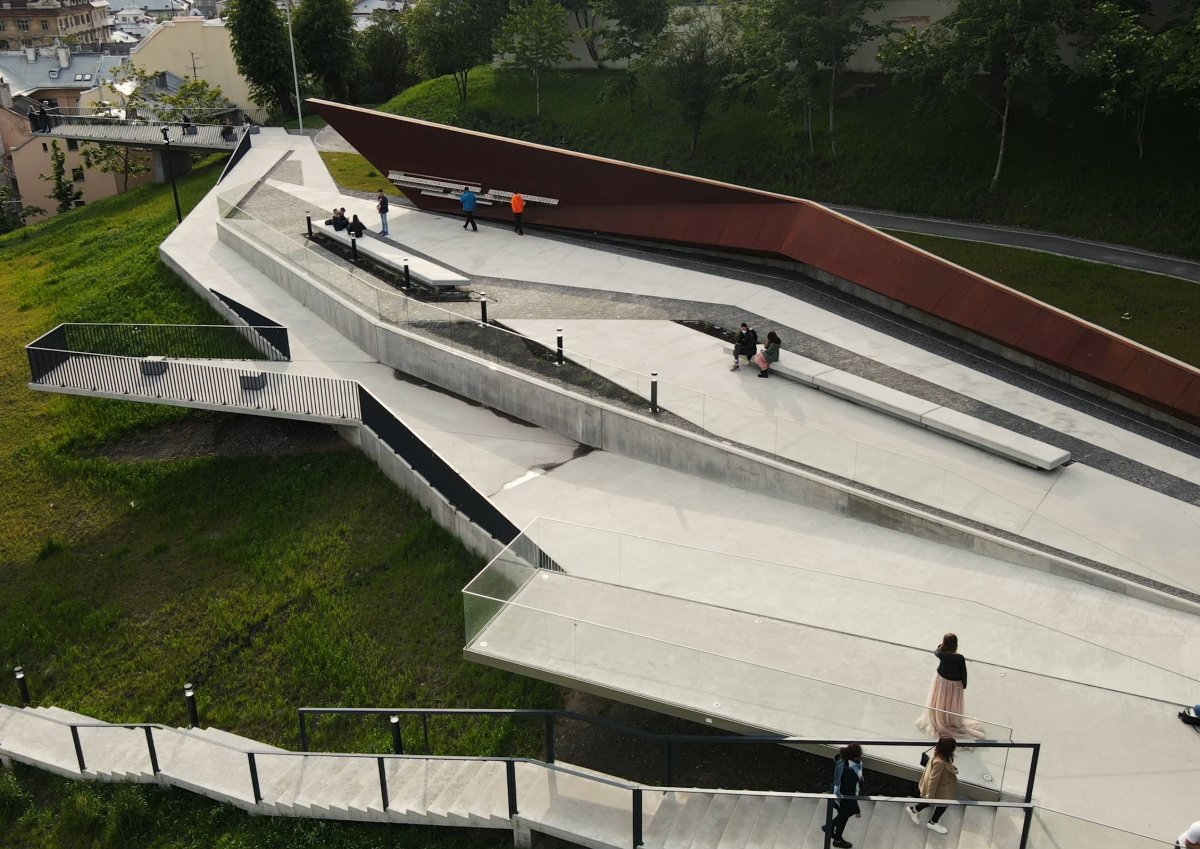
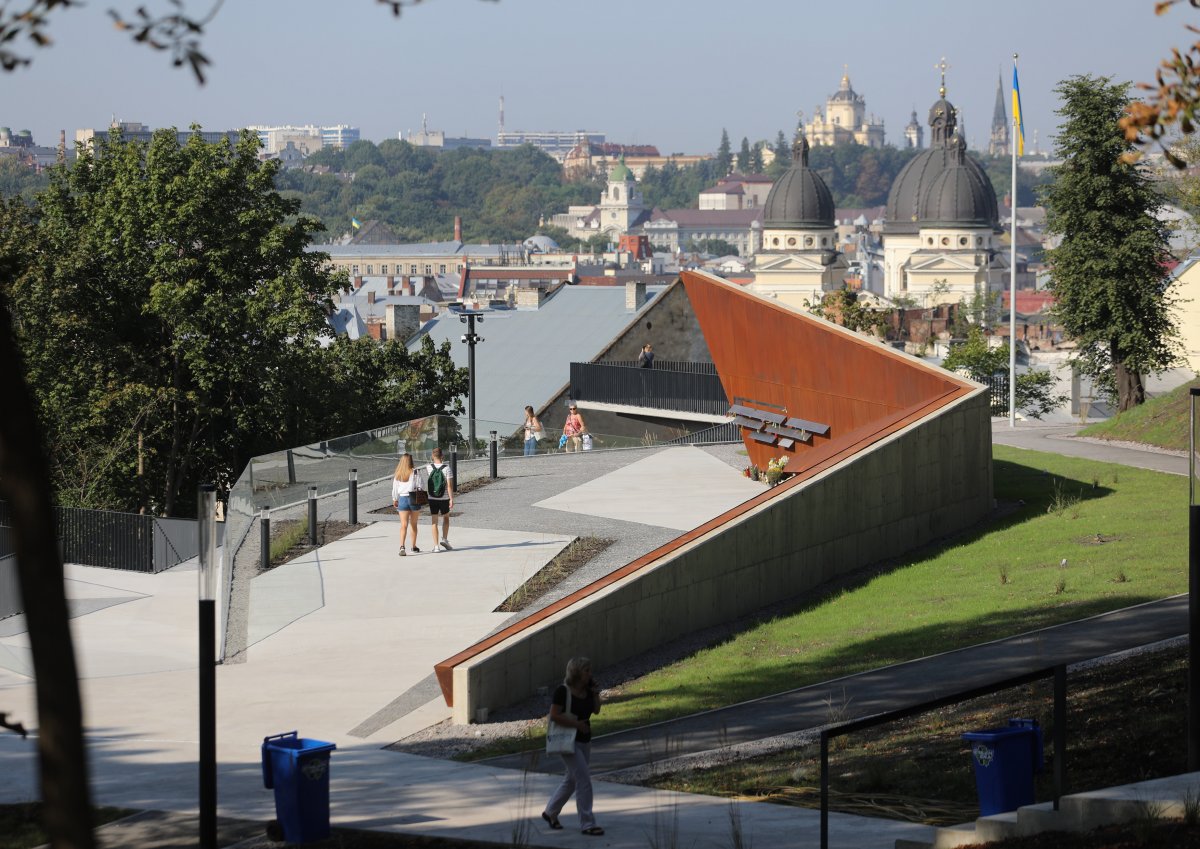

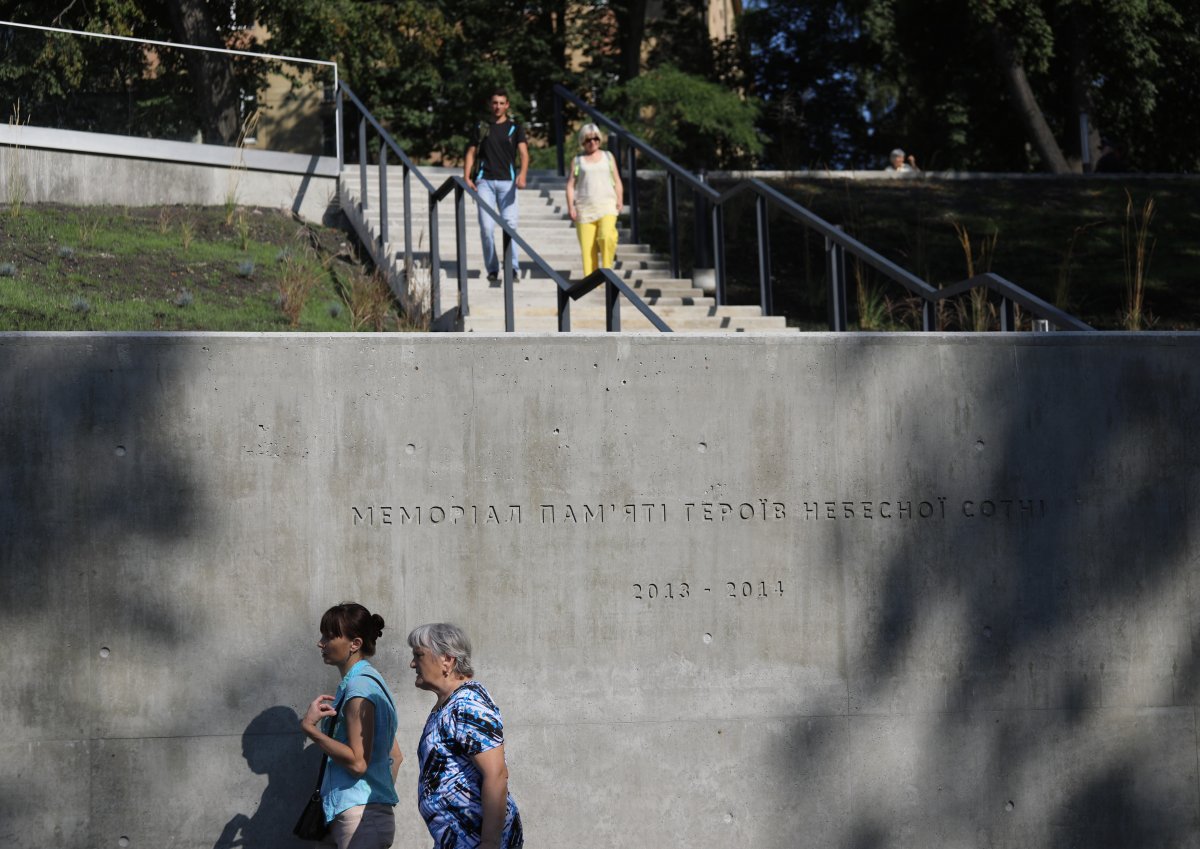
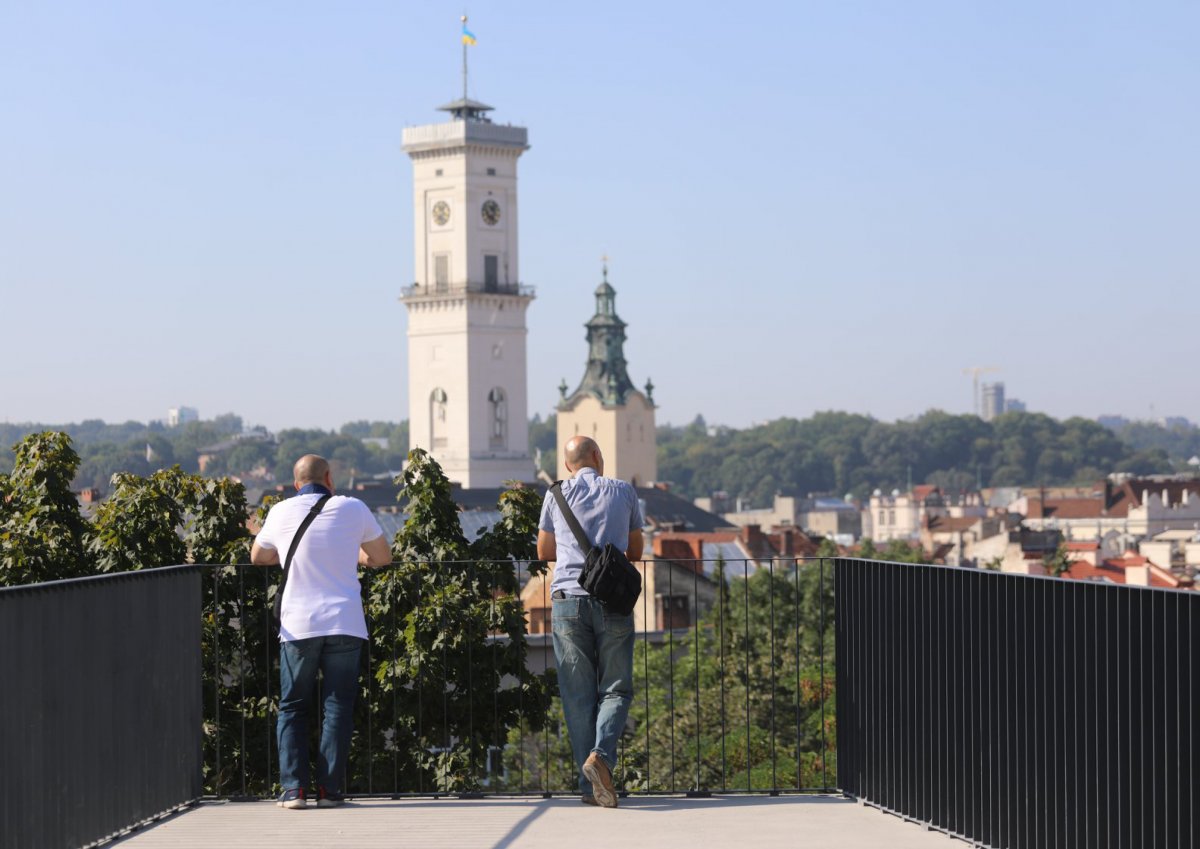
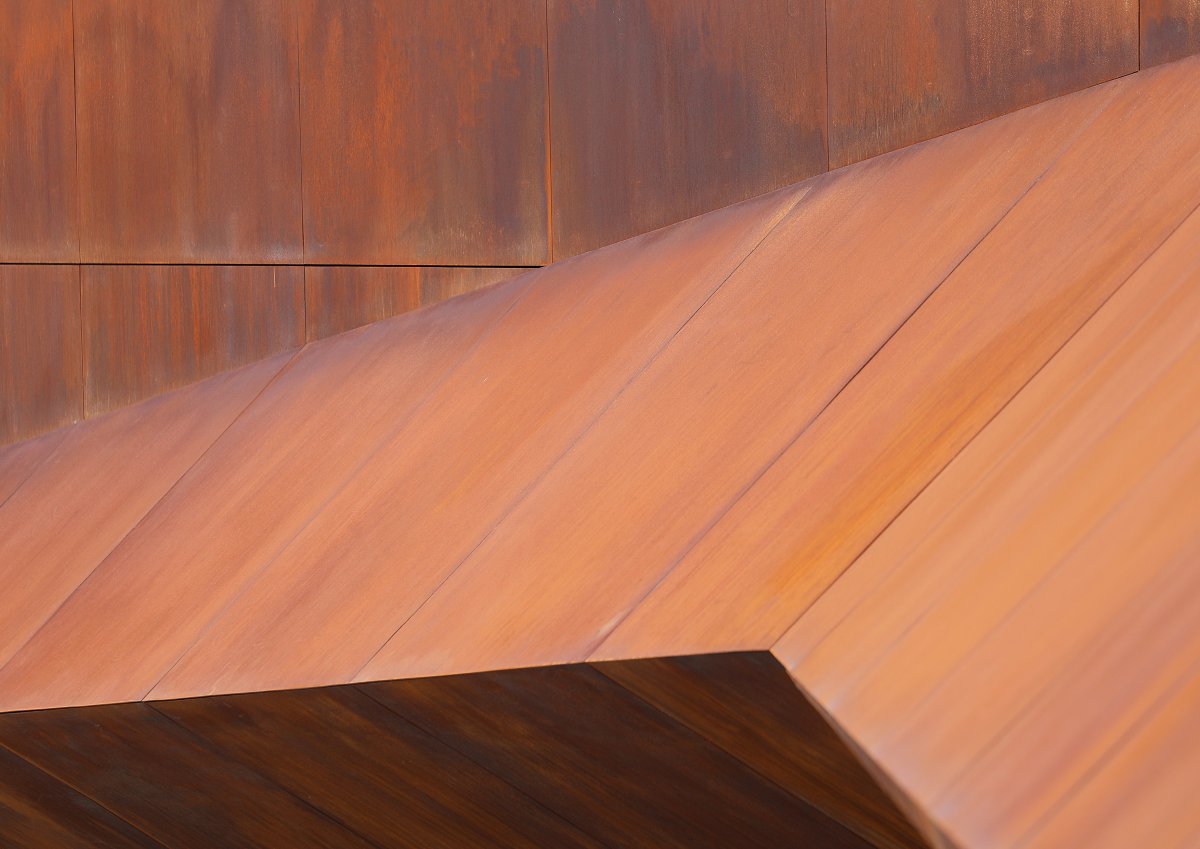
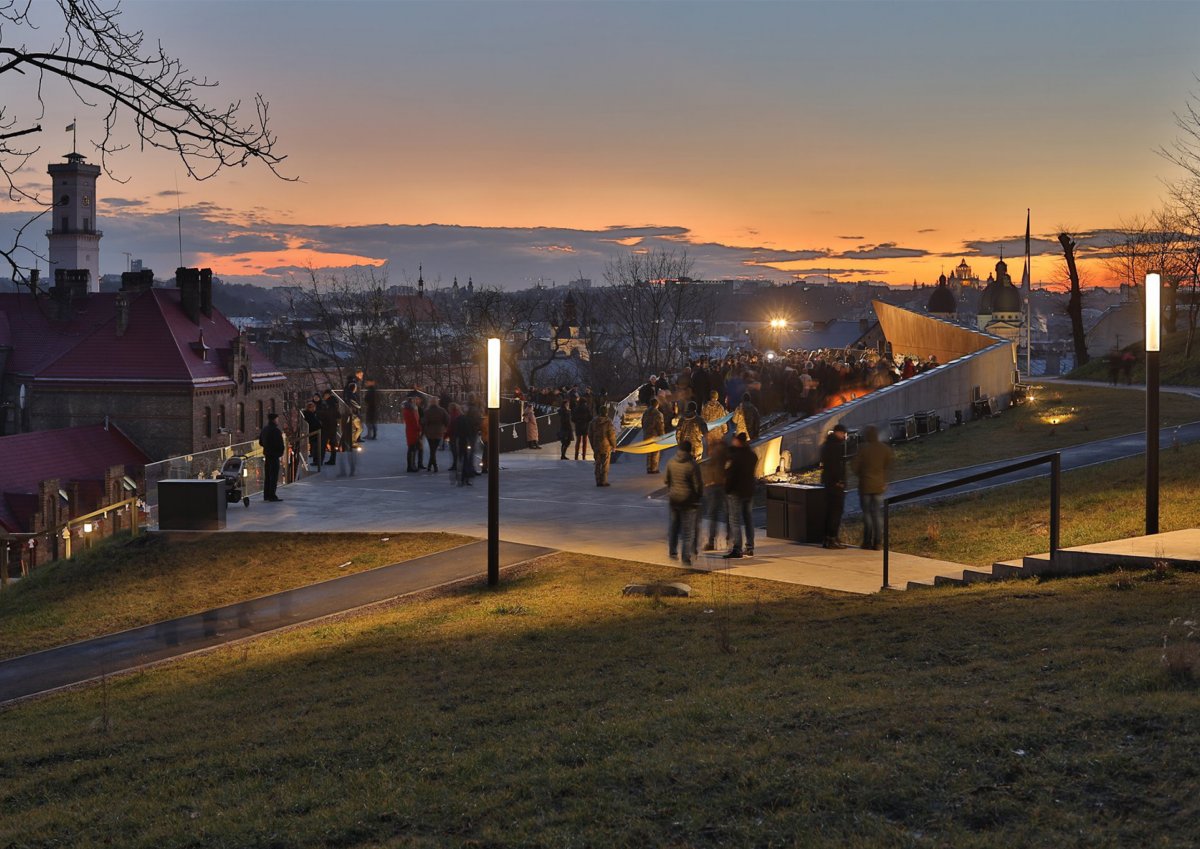
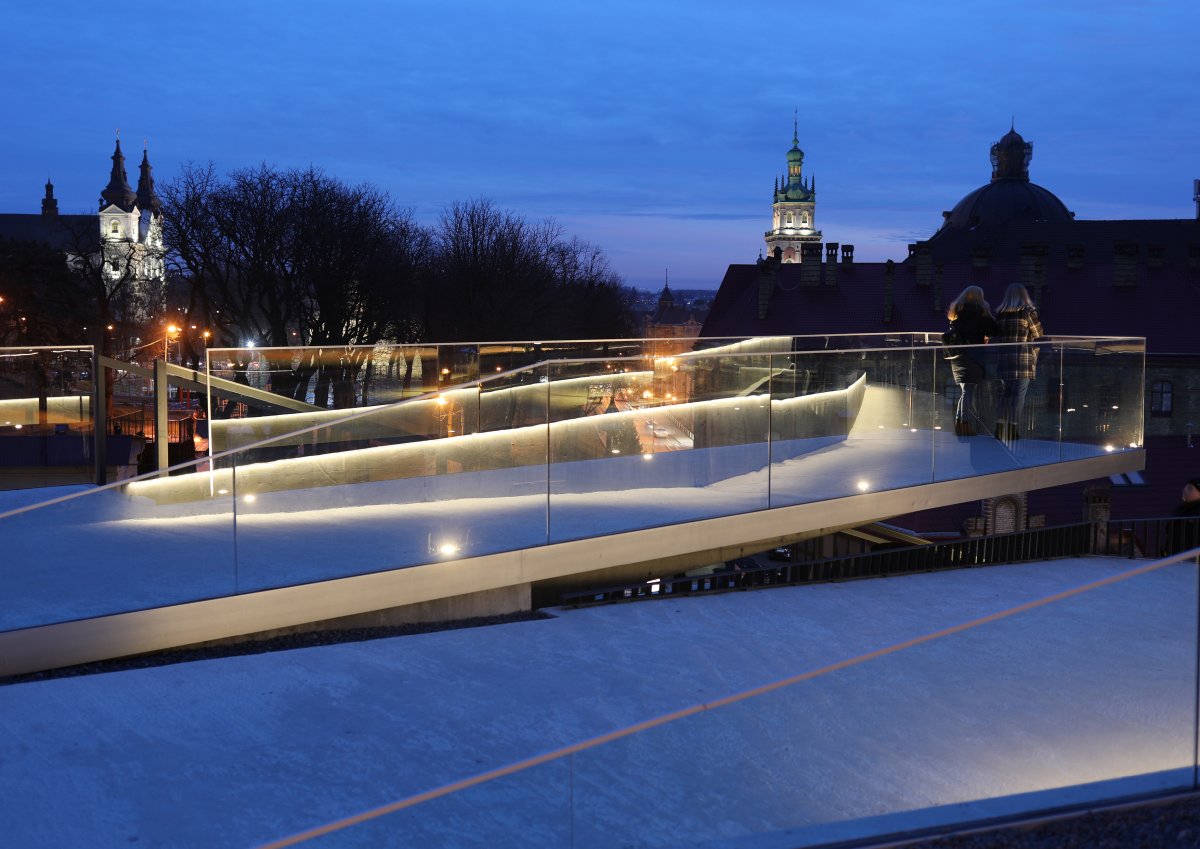
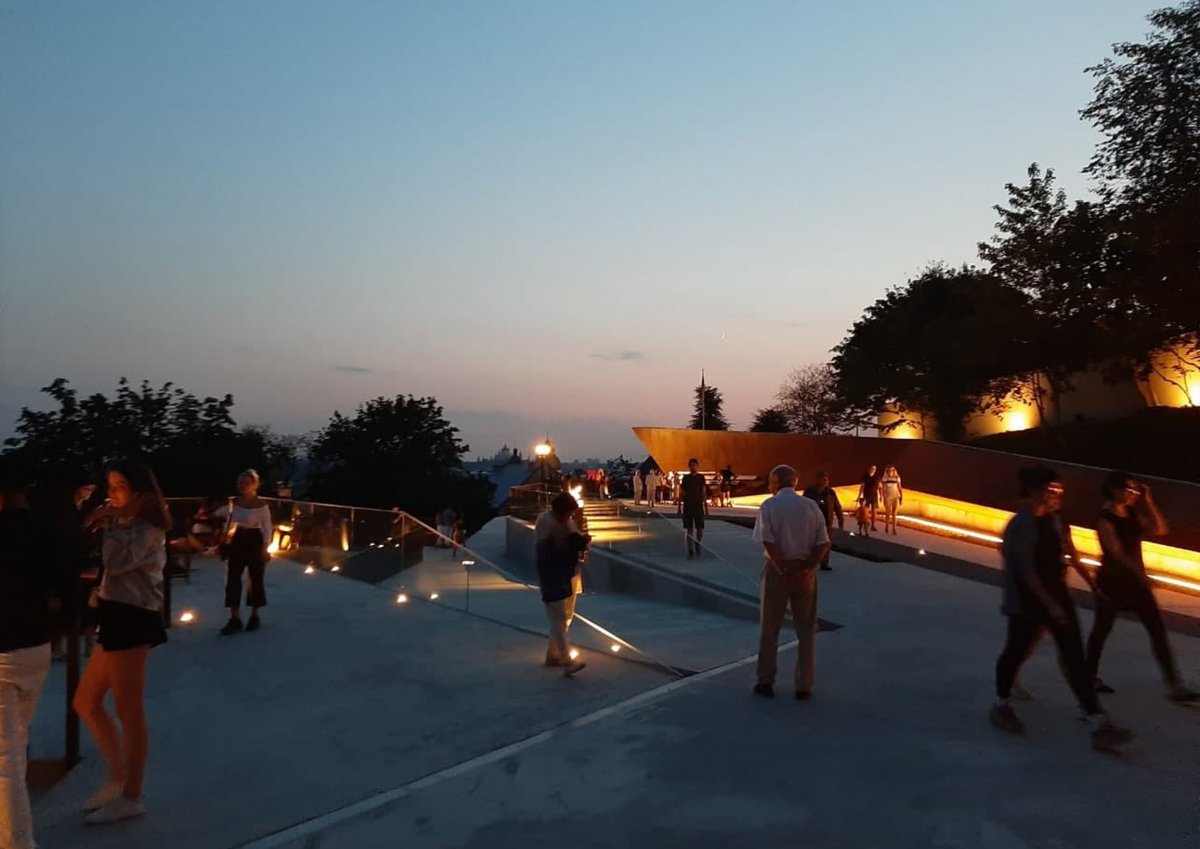
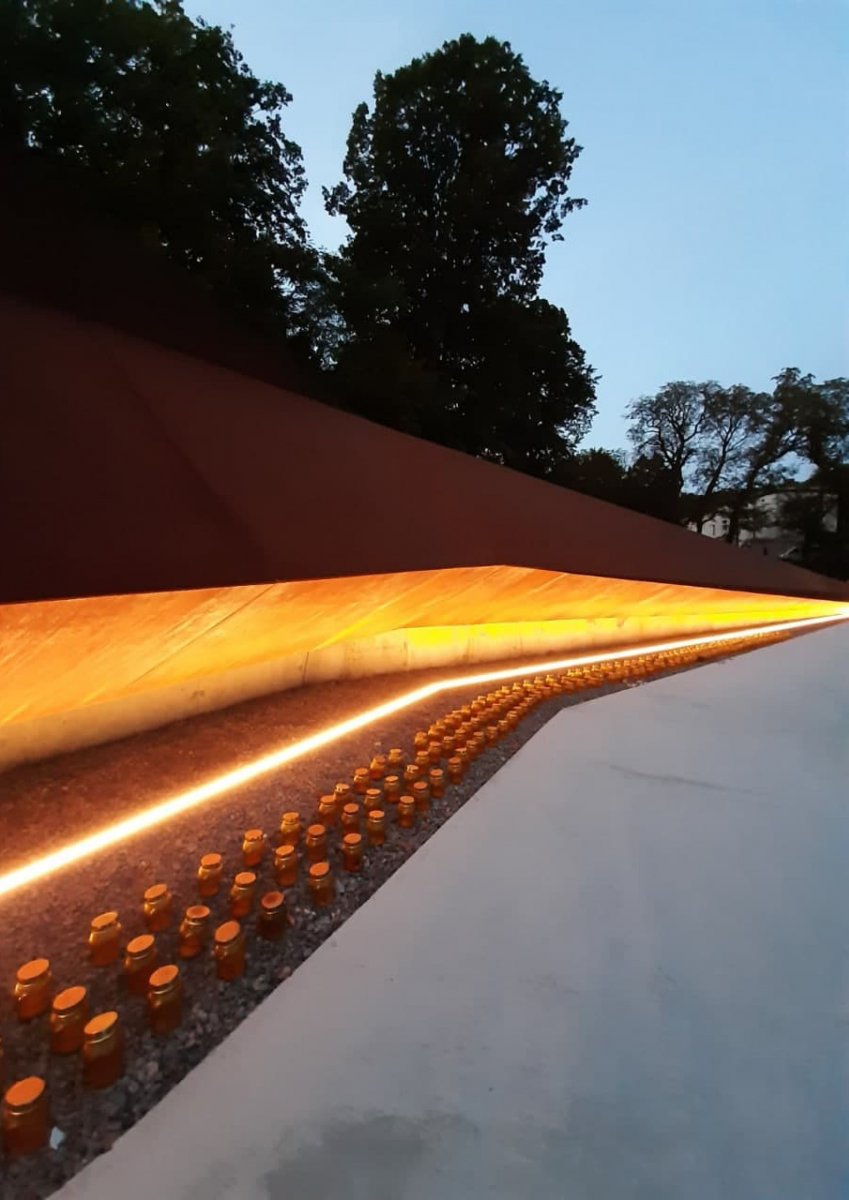
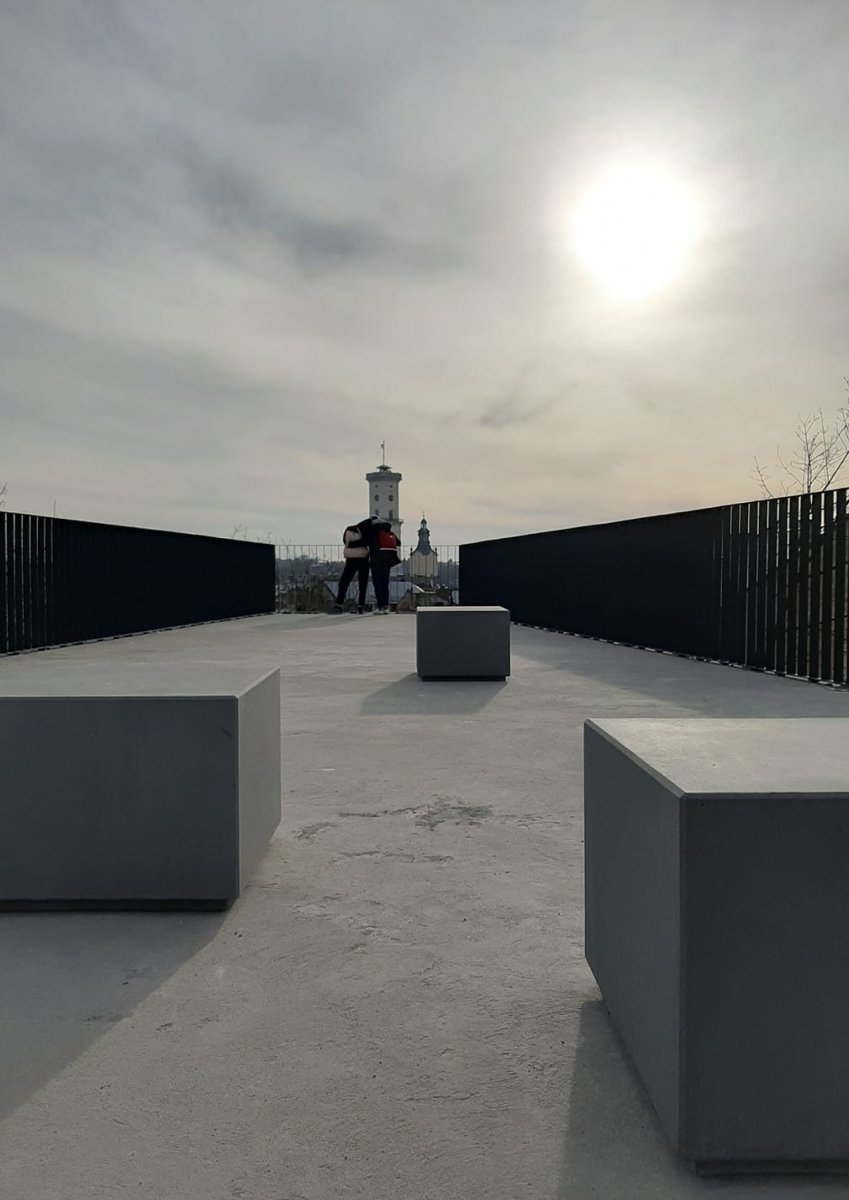
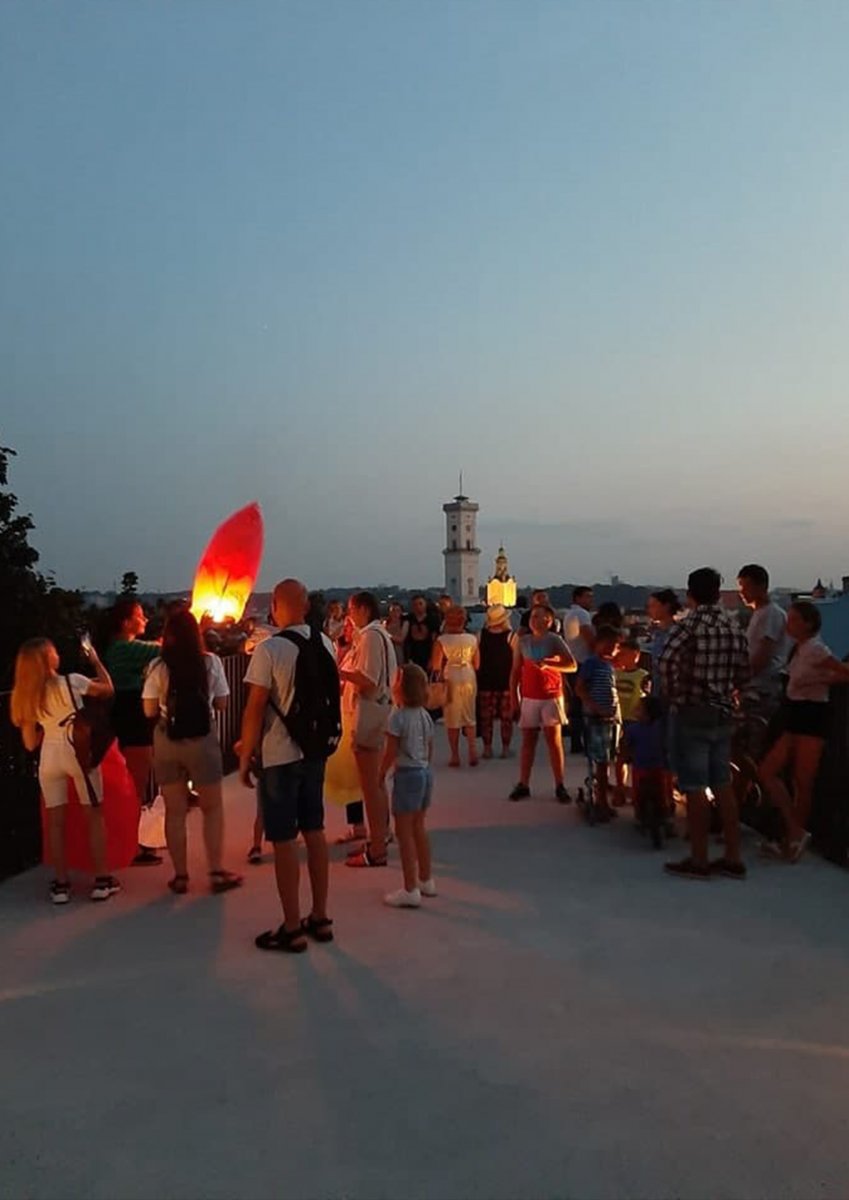
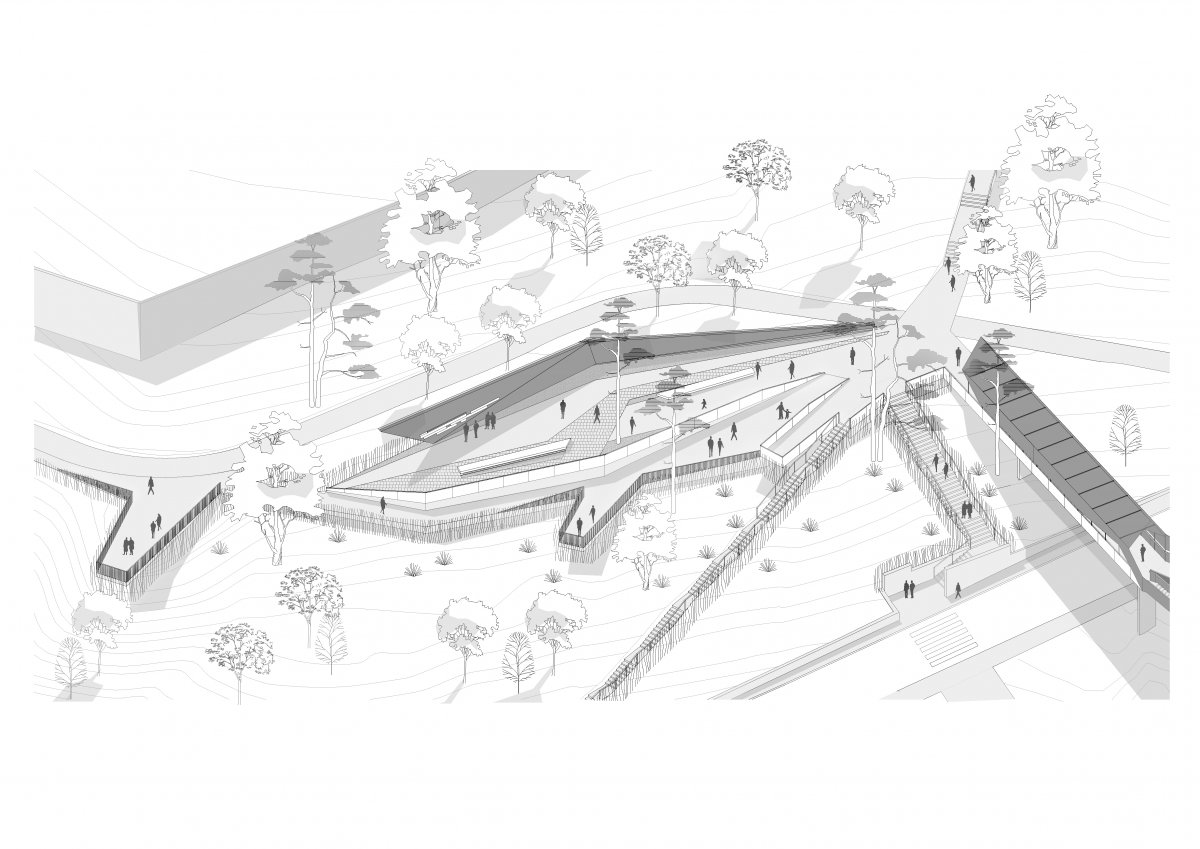
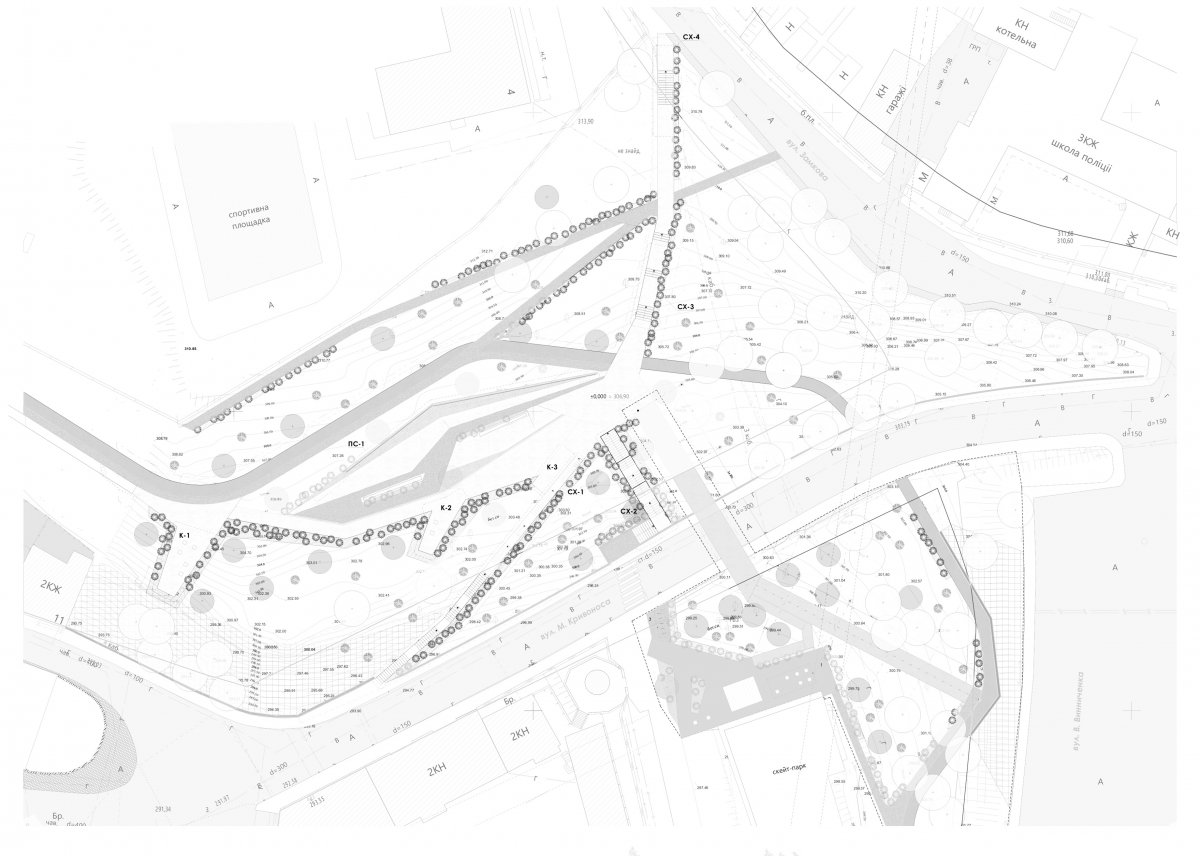
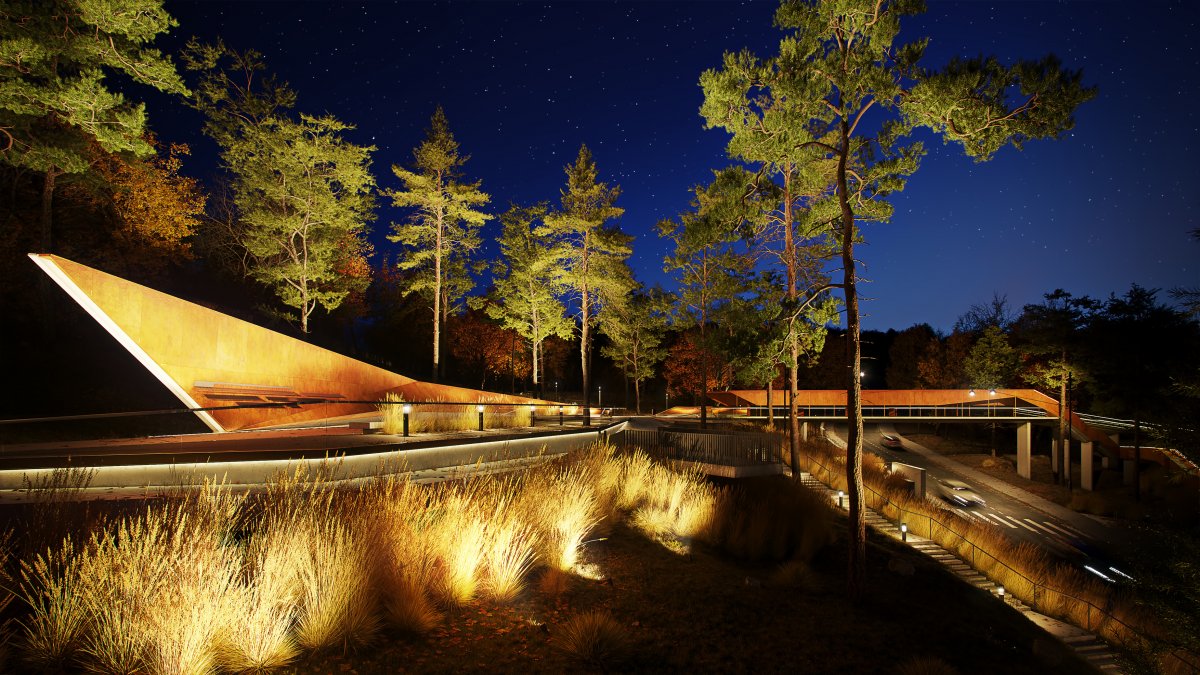
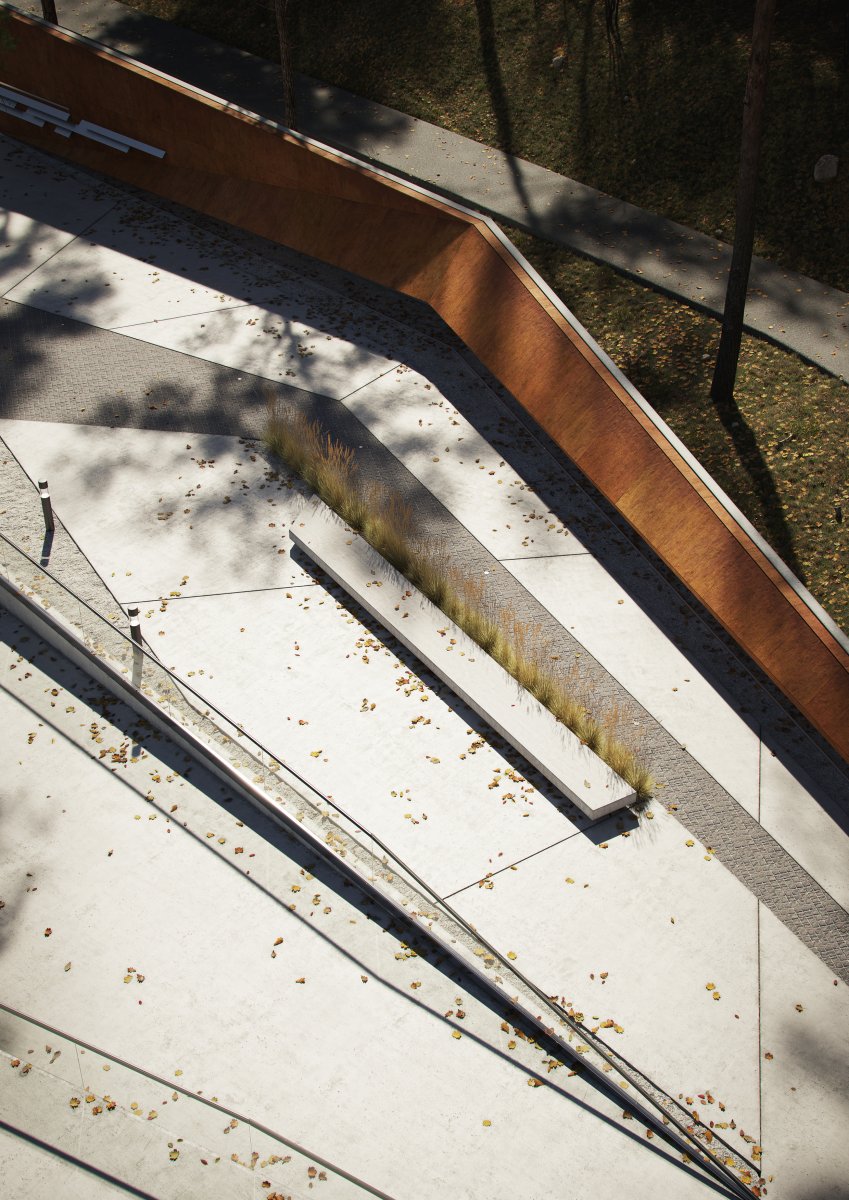
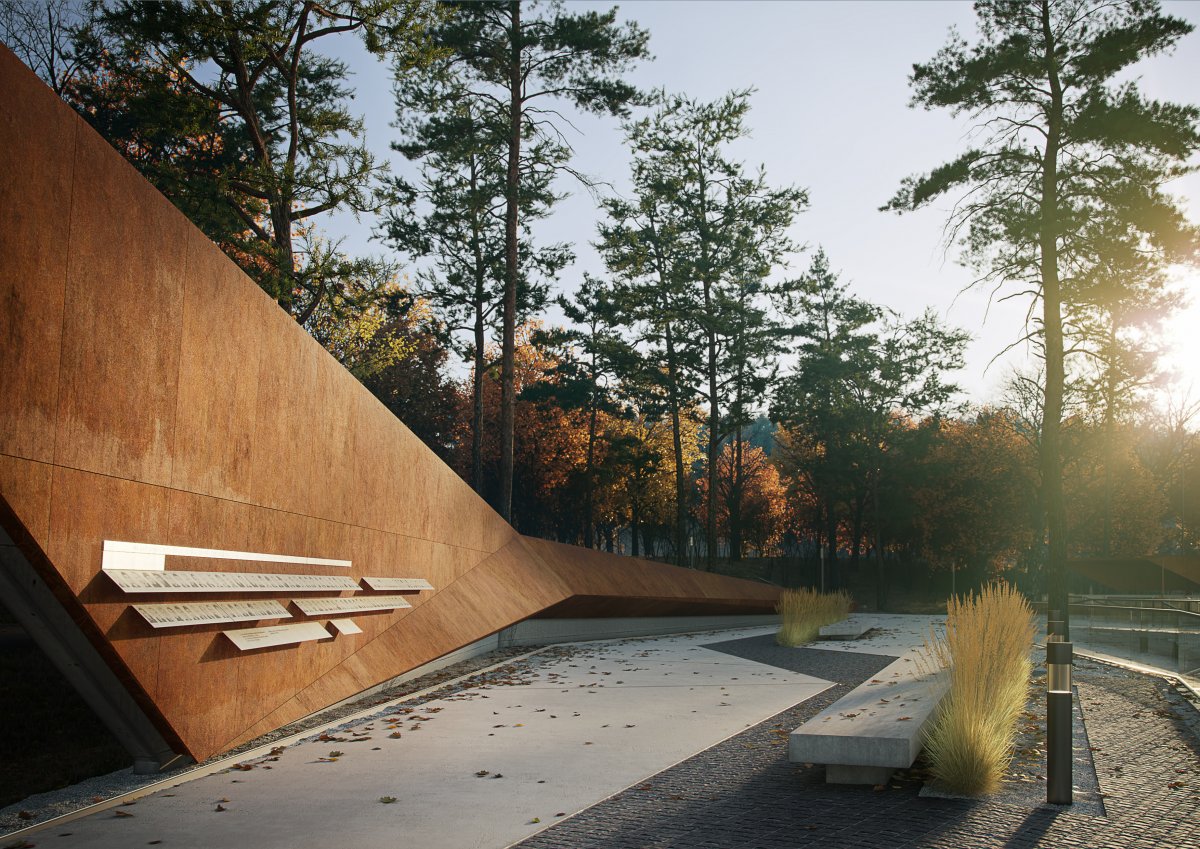
The concept of this Memorial is related to the public space, which brings together important parts of the urban landscape. In addition to its memorial function, the project also has an active social purpose and intersects with the values of the Revolution of Dignity. A very important symbolic meaning is that it is not a dead-end memorial, but a new connecting bridge in the city. This is a significant new aesthetics for Ukraine, which, in my opinion, is associated with the ideals of the Revolution.